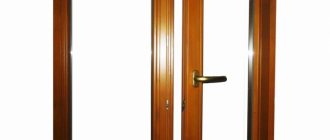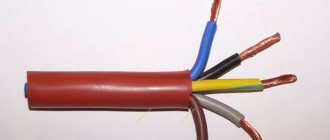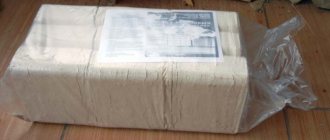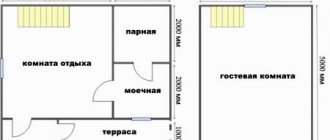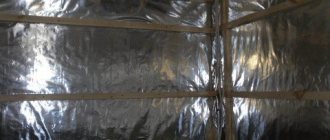Over time, variations in the location of wires outside the wall, without grooves, have changed. At this stage of technology development, to carry out manipulation, special channels are used in the form of a box made of plastic or metal. Contains electrical cords according to indoor safety standards. But in order to install such boxes correctly, you need to know how they are attached to different types of walls.
The nuances of installing and laying cable ducts
To ensure that the fastening of the cable channel to the wall is reliable and ensures safety, the following cumulative nuances are taken into account:
- The first thing you need to pay attention to is that the box can be made of plastic or metal;
- They also differ in shape. In cross-section - rectangular, round or oval.
In terms of size, there are mini cable channels that are practical and compact. But, there are also floor options that are used to implement hidden installation. This variation is found only in oval shape, so as not to be subject to unnecessary mechanical stress.
In addition, cable channels may differ in other parameters and characteristics. Available on the market:
- Skirting;
- One-sided;
- Double sided;
- Perforated;
- Flexible - for bypassing rounded, curved or concave areas;
- Parapet;
- Industrial;
- Transparent;
- Corner and others.
These parameters are taken into account before installation of the cable channel to various types of walls begins.
The first thing you need to pay attention to is that the box can be made of plastic or metal.
Classification of cable channels.
Depending on the room, the schematic arrangement of the wiring lines and the number of wires in them, it is recommended to use boxes of various types.
Main cable channel options:
- Pipe-based channels, further divided into horizontal and vertical. Similar channels will also include subchannels. The term “conduit” is used quite often;
- Box. PUE, clause 2.1.10 defines a box as a closed hollow structure of rectangular or other cross-section, intended for laying wires and cables in it. Boxes can be blind or with openable lids, with solid or perforated walls and lids. Blind boxes should have only solid walls on all sides and no lids.
- Trays. PUE, clause 2.1.11 defines a tray as an open structure intended for laying wires and cables on it. The tray does not protect against external mechanical damage to the wires and cables laid on it. Trays must be made of fireproof materials. They can be solid, perforated or lattice;
- Channels for laying cable harnesses, most often made on the basis of various types of discrete fastenings (brackets).
Channel cable size chart:
Separately, we note that the installation of external electrical wiring is carried out last, after all finishing work has been completed.
The procedure for attaching a cable channel to the wall with your own hands
Since it is not difficult to attach the cable channel to the wall, you can perform this manipulation yourself. Here is the procedure to follow:
- First choose the right box. It fits the aesthetic characteristics of the interior and does not stand out on the wall.
- Please ensure that the installation is carried out accurately so as not to spoil the aesthetics of the room.
- Therefore, first a diagram is drawn up, taking into account the characteristics of the house and specific rooms. This way you can take into account the convenience and rationality of placing lines. Draw the shortest path of an electric line between two points.
- Only after drawing up the diagram is marking done, checking the parallelism and perpendicularity of future lines. A level will help here to check whether the line corresponds to the horizon and vertical.
- Lines are marked along the horizontal and vertical lines of writing instruments. At the same stage, the location of the distribution box and future connection points for household appliances are noted using plugs or switch buttons.
- If you have to make adjustments, then do this at the stage of fixing the cable channels.
The installation is carried out precisely so as not to spoil the aesthetics of the room.
Attaching cable ducts to plasterboards
Due to the excessive crumbling of plasterboard boards, attaching such a product to this type of plane is quite problematic. Any attempt to cut threads with self-tapping screws or drill holes will lead to zero efficiency.
Therefore, they use products made of plastic materials, which should be fixed with adhesives that provide the necessary strength. It is better to install boxes that are small in cross-section using double-sided tape.
They use products made of plastic materials, which should be fixed with adhesives that provide the necessary strength.
How to attach a cable duct to a concrete wall
Due to its high mechanical strength, it is possible to install boxes of different sizes (both plastic and metal) onto a concrete surface. Since any type of fasteners can be screwed into concrete.
Due to its high mechanical strength, it is possible to install boxes of different sizes on the concrete surface.
Fastening the cable channel to metal
When it becomes necessary to secure the structure to a metal surface, use special fasteners for the bracket. It allows you to achieve maximum reliability when fixing massive structures in which heavy cables are laid. This method has found application in industrial premises or office buildings, where a large number of electrical cords need to be laid out.
For domestic needs, in the vast majority of cases, they prefer metal screws; they are popularly called “bugs.”
When it becomes necessary to secure the structure to a metal surface, use special fasteners for the bracket.
How to attach a cable duct to a brick wall
When attached to brickwork, it is best to use dowels due to their reliability. They can withstand significant mechanical loads. Take into account the peculiarity of a brick wall - do not drill holes in the seam lines, so that when fixing the plastic channel it does not experience sagging.
When attached to brickwork, it is best to use dowels due to their reliability.
Preparation for installation, surface marking
Open installation imposes increased aesthetic requirements: everything must be “smooth and parallel.” In this case, the box is fixed along the preliminary marking lines. It is carried out using a level (laser or water, construction), a square, a tape measure, a marker, a ruler, a pencil (marker).
Installation instructions Install the box according to the marked markings
Here's how to properly divide the process into stages:
- Initially, a diagram of the optimal electrical wiring is drawn up;
- lines on the wall are drawn by tapping according to the level, all branches are strictly at right angles;
- on them, with a pencil, according to the existing plan, the location of distribution boxes, sockets, switches is marked;
- necessary adjustments are made as work progresses.
You can make turns and corners yourself.
At the end, you should calculate the length of the marking stripes, the number of installation points, turns, and corners. This will allow you to order the exact amount of working material.
Turns and corners can be purchased either ready-made or made from cable duct yourself. Using the former leads to increased costs. But work on difficult sections is faster, and the appearance of the route is better than when using homemade ones.
Self-production will require the additional use of sealants to seal seams.
If you have a laser, you don’t have to make markings
Boxes for installation can be cut in advance (for a large area) or during the process. The first case begins with precise measurements using a tape measure along the marking lines.
Then they cut the working material into the required lengths in order to install it later. Accuracy of measurements is important here.
It is easier to carry out the work according to the scheme: try it on - cut it - fasten it.
Drawing straight marking lines and using ready-made components will allow you to attach the cable channel without spoiling the beauty of the room.
Methods of fastening to walls made of various materials
Before you begin to attach the cable channel, regardless of its material, it is necessary to clearly assess what type of wall this manipulation will be carried out on. In accordance with this, select the fixation method.
It is necessary to clearly assess what type of wall the cable duct will be attached to.
Fastening the cable channel to dowel-nails
The most common type of installation, which is distinguished by its versatility, ease of installation procedures and low price. This option is suitable for hidden and open installation variations.
But, it is important to consider that dowels, just like self-tapping screws and self-tapping screws, must be tightened to the end. Otherwise, the cap that sticks out may damage the wire insulation.
The method is used on walls made of brickwork, as well as concrete monolith. The fixation step should have a distance of about 45 cm.
This option is suitable for hidden and open installation variations.
How to attach a cable duct with glue
To implement this fastening option, first cut the plastic structure into sections of the required length. Then apply glue along the back of the channel. After this, fixation to the surface is carried out. Hold it a little so the glue has time to set.
It is worth remembering that choosing adhesive compositions is recommended in extreme cases when it is not possible to mount in any other way. For example, when it is necessary to place a plastic structure on tiles or expensive wallpaper.
To implement this fastening option, first cut the plastic structure into sections of the required length.
Features of fastening with self-tapping screws
Most often, such fasteners are used on wooden surfaces or on plasterboard structures. In the second case, it is necessary to carry out the manipulation very carefully so as not to lead to coloring. The distance between adjacent screws is most often in the range of 35...45 cm. It is selected according to the cross-section of the wire and the materials of the wall itself.
Most often, such fasteners are used on wooden surfaces or on plasterboard structures.
Can nails be used for installation?
The use of carnations is extremely rare. There is no reason to choose them.
- They can only securely enter a wooden wall;
- At the slightest mechanical load, they can jump out of the wooden surface and cause damage to the wire;
- Cloves can serve as additional fixation to the glue to ensure increased reliability in case the adhesive composition dries out over time.
The use of nails is extremely rare.
Tips and tricks
Before purchasing and installing cable channels, determine the position and number of power and low-current outlets in each location. If you know where and what furniture and electrical appliances will be located, it will not be difficult to count the sockets.
Related article: Laying tiles on walls in a wooden house
It is more convenient to lay the wires in the channels in one bundle, while simultaneously closing the box. You can pull the wires one by one, securing the already laid covers with a small piece every half meter.
To attach a large number of wires to gypsum fiber sheets, you can use special nylon plugs for screws that are inserted into the wall.
How not to attach a cable channel
You cannot mount such an element of the product for electrical wires on the surface of the building from the outside. Since water can collect here from passing precipitation. As a result, a short circuit or other problems in the electrical networks are likely to occur.
The following is not allowed indoors:
- Fastening individual cable channel elements at an angle other than 90°;
- They also retreat from the window by at least 10 cm;
- Do not attach the cable duct directly to the ceiling. You will have to retreat 15 cm;
- It is impossible to secure the cable channel, leaving the corners around the corners uncovered. In these places it is necessary to use special corner nozzles;
- For fastening, select only those materials that can provide reliable fixation. Otherwise, a wiring break may occur.
You cannot mount such an element of the product for electrical wires on the surface of the building from the outside.
Classification of cable channels
Using a cable channel allows you to fix the cable on a base made of concrete, brick, wood, plasterboard, foam block, stone.
However, the attachment methods will be different.
Depending on the room, the schematic arrangement of the wiring lines and the number of wires in them, it is recommended to use boxes of various types.
Their detailed classification is presented in the table.
| Classification feature | Kinds | Description |
| installation location | floor | in their shape and appearance they are optimally adapted to the installation location; |
| main | ||
| skirting | ||
| color | Available in different colors and shades | fit harmoniously into the interior of the rooms |
| size | different channel volumes - for one, 2, 3 or more cables | dimensions from 12×12 to 100×60 mm; have different shapes of corners - from sharp to rounded |
| number of locks | with one | 2 latches – more securely hold the cover on the channel, reducing the possibility of deformation; |
| with two | ||
| product material | aluminum | covered with film; a variety of shades gives an attractive look; fireproof |
| steel | installed indoors or outdoors; Available with a galvanized surface in different colors; do not burn; susceptible to corrosion when scratched |
The market allows you to select products for specific operating conditions.
The most expensive option is aluminum, the cheapest is plastic. In any case, the latter should be taken, which do not burn, but melt.
What can happen if the cable channel is installed incorrectly
If technological and design violations are allowed during installation of products for laying cables, wires and other electrical cords, for example, telephone, the following may occur:
- Fire if a fastener element violates the integrity of the insulation;
- Short circuit, which can cause breakdown of household appliances;
- Under no circumstances should power and low-voltage wires be placed in the same box;
- If there is contact with each other, adverse consequences may occur;
- Take into account the material and quality of the wall - this is a panel house, with wooden cladding or stone and brickwork. This is an important factor that imposes conditions on the choice of fasteners.
Under no circumstances should power and low-voltage wires be placed in the same box.
If the homeowner himself cannot cope with this task or is not confident in his abilities, then it is better to seek the help of professionals. They will be able to ensure the quality of installation work.
Open wiring in plastic pipes
A better option was to hide the electrical cables in plastic pipes, which looked much better on the walls. In addition, plastic pipes served as additional protection from mechanical damage.
Disadvantages: complexity of installation and routine maintenance. Electricians still remember how difficult it was to pull cables through pipes, especially if there were bends.
Often the pipes had to be cut and, after pulling the cables, connected with couplings. Another significant drawback is the great difficulty during repair work. Due to its low cost, open wiring in plastic pipes is still quite often used today.
Open wiring in plastic pipes
External wiring
Installation of electrical wiring in a corrugated
Mounting methods
Despite all the versatility of cable boxes, you will need to perform the correct installation of the elements. There are various options for this. The choice of a specific one depends on the type of surface on which you plan to install the box. The following are common options for attaching cable ducts.
Self-tapping screws
This fixation option is used on surfaces made of wood or plasterboard. Fastening is carried out with wood screws, 40 mm long. In this case, it is necessary to take into account the number and cross-section of the wires being laid. The frequency of placement of screws depends on this factor. As a rule, it is enough to maintain a step within the range of 40 to 50 cm. To speed up installation, it is better to use a screwdriver.
Fastening the baseboard with cable duct using self-tapping screws
